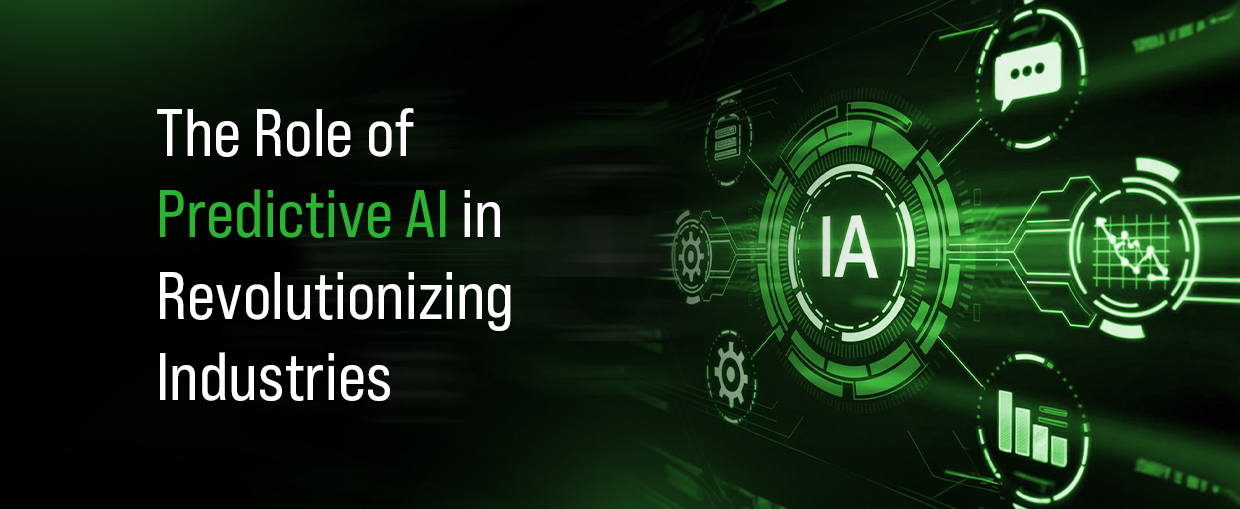Predictive AI is a type of software that utilizes statistical methods and machine learning to uncover patterns and anticipate future events or system behaviors. This technology is becoming essential for businesses that want to harness data-driven insights to stay ahead of the competition. While Generative AI often garners attention for its ability to create content and improve customer interactions, Predictive AI plays a crucial role as well, enabling organizations to look ahead, make well-informed choices, and strategize for the future.
For a long time, analysts have employed predictive analytics to guide decision-making within companies. However, the advent of predictive AI technology accelerates the process of statistical analysis and enhances accuracy, thanks to the vast amounts of data that machine learning algorithms can access. By examining thousands of variables and potentially decades of historical data, AI predictive analytics can generate forecasts that help organizations prepare for upcoming trends.
Let’s take a closer look at predictive AI, its key techniques, and use cases.
How Does Predictive AI Work?
At the heart of Predictive AI are machine learning models that analyze data. These models learn from historical data by identifying correlations, trends, and anomalies through data analysis. After training, the model can forecast future events by applying new data against learned patterns. Statistical analysis further enhances the models, improving the accuracy of their predictions.
The effectiveness and precision of predictive AI models are significantly influenced by the quality and volume of the training data. Implementing strong data governance practices, along with data cleaning, validation, and regular updates to the datasets, ensures that the data is reliable, which ultimately boosts the accuracy of the predictive models.
MLOps (Machine Learning Operations) plays a crucial role in deploying and scaling predictive models in production. Similar to how AIOps platforms handle the complexities of IT operations using machine learning, MLOps oversees predictive models by automating their deployment, monitoring, and updates.
Predictive AI Techniques
Let’s take a look at some of the key techniques used in predictive AI:
Regression Analysis: This statistical approach is essential for identifying relationships between different variables and forecasting continuous results. For example, regression analysis can assist companies in predicting sales by considering factors like marketing spend and seasonal trends.
Neural Networks: Modeled after the human brain, neural networks are advanced machine learning algorithms that are particularly adept at recognizing patterns within data. They find extensive applications in areas like image recognition, natural language processing, and predictive maintenance.
Decision Trees: A popular machine learning algorithm, decision trees employ a tree-like model to categorize data and generate predictions. They are especially effective for making decisions that require evaluating multiple criteria, such as assessing credit risk or segmenting customers.
Clustering: This method organizes similar data points into groups, making it essential for customer segmentation and predictive analysis. By identifying clusters in data, businesses can customize their marketing approaches for various customer segments.
Time Series Analysis: This technique focuses on examining and forecasting data that changes over time, such as sales trends or weather conditions. It enables businesses to predict trends and make well-informed decisions based on temporal data.
Generative AI vs Predictive AI
Predictive AI and generative AI are both artificial intelligence technologies powered by machine learning and large datasets. Predictive AI focuses on forecasting future outcomes, while generative AI, like ChatGPT or Llama 3, utilizes large language models (LLMs) to generate new content based on natural language inputs. Although generative AI employs statistical methods to make predictions, its primary aim is to generate text, code segments, or visual art.
It’s important to note that the choice between predictive AI and generative AI doesn’t have to be one or the other. Many organizations can gain significant advantages by integrating both types of AI into their operations. When used together thoughtfully, their unique capabilities can enhance each other and drive better results.
Use Cases of Predictive AI
- Retail
Predictive AI utilizes advanced analytics to assist retailers in anticipating customer demand, managing stock levels, and tailoring marketing efforts to align with consumer behavior.
- Healthcare
Medical facilities and providers employ Predictive AI to forecast patient admissions, refine treatment strategies, and predict potential disease outbreaks.
- Manufacturing
In production environments, Predictive AI helps predict equipment failures, allowing for timely maintenance to minimize operational interruptions.
- Financial Services
Predictive AI plays a crucial role in risk management, fraud detection, and credit scoring, enabling financial organizations to effectively handle and reduce risks.
- Inventory Management
Predictive AI can analyze trends to identify peak consumer demand times, helping stores optimize inventory and ensure adequate stock levels.
- Tailored User Experiences
Predictive AI enables service providers to anticipate user needs, improve customer interactions, and predict behaviors based on historical data and previous activities.
- Predictive Maintenance
By tracking sensor data such as vibration and temperature from machinery, predictive AI identifies equipment at risk of failure, allowing for proactive servicing to prevent downtime.
- Recommendation Systems
Streaming services utilize predictive algorithms to recommend personalized content that aligns with users’ preferences, based on their past viewing and listening habits.
The Wrap
Predictive AI is revolutionizing business operations by automating processes and forecasting future events. To succeed in this data-driven landscape, organizations must skillfully leverage this technology, identify opportunities, and take advantage of them. You can do this effortlessly by partnering with an experienced and reliable AI development company.



